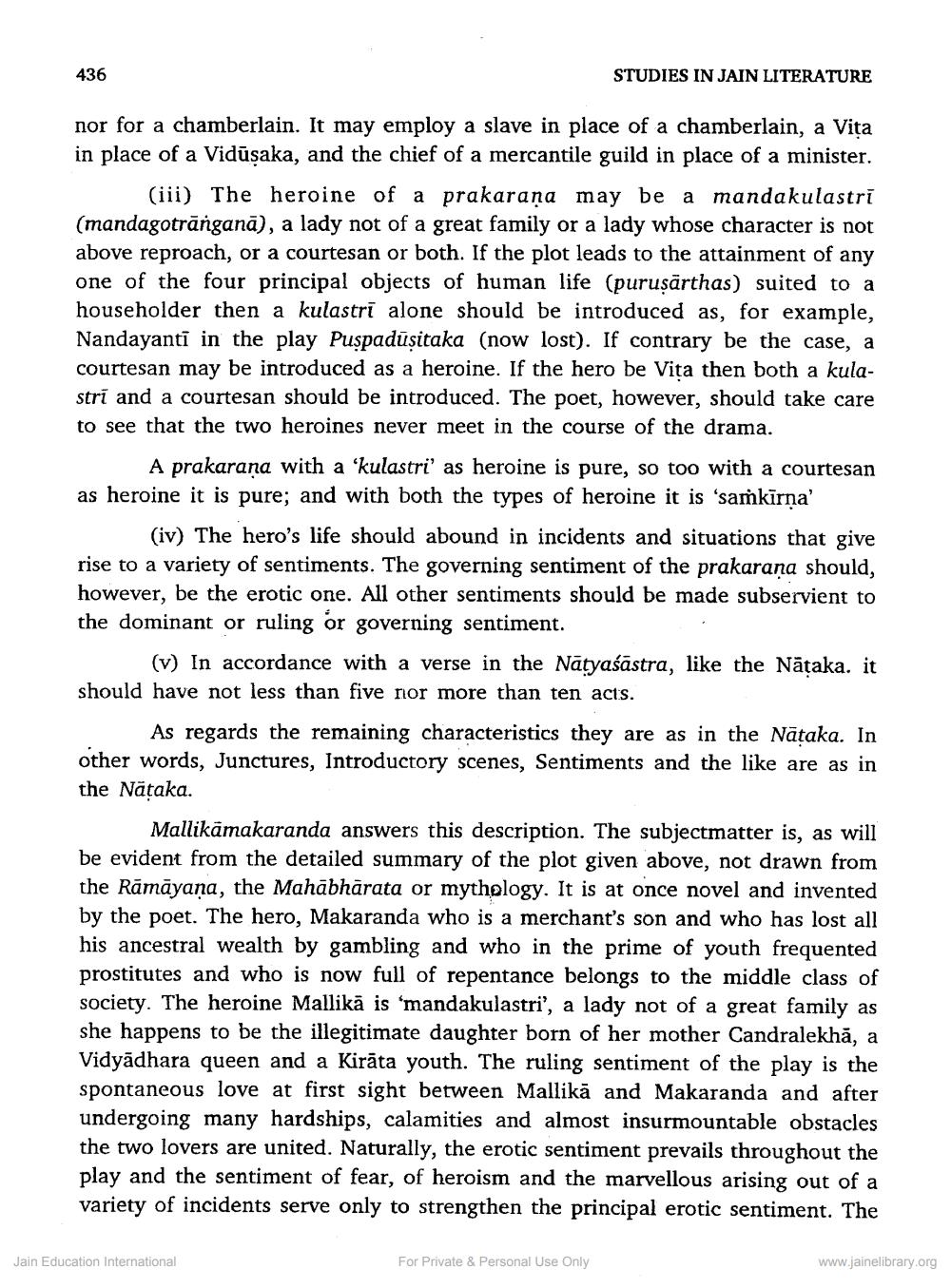________________ 436 STUDIES IN JAIN LITERATURE nor for a chamberlain. It may employ a slave in place of a chamberlain, a Vita in place of a Vidusaka, and the chief of a mercantile guild in place of a minister, (iii) The heroine of a prakarana may be a mandakulastri (mandagotrangana), a lady not of a great family or a lady whose character is not above reproach, or a courtesan or both. If the plot leads to the attainment of any one of the four principal objects of human life (purusarthas) suited to a householder then a kulastri alone should be introduced as, for example, Nandayanti in the play Puspadusitaka (now lost). If contrary be the case, a courtesan may be introduced as a heroine. If the hero be Vita then both a kulastri and a courtesan should be introduced. The poet, however, should take care to see that the two heroines never meet in the course of the drama. A prakarana with a 'kulastri' as heroine is pure, so too with a courtesan as heroine it is pure; and with both the types of heroine it is 'samkirna' (iv) The hero's life should abound in incidents and situations that give rise to a variety of sentiments. The governing sentiment of the prakarara should, however, be the erotic one. All other sentiments should be made subservient to the dominant or ruling or governing sentiment. (v) In accordance with a verse in the Natyasastra, like the Nataka, it should have not less than five nor more than ten acts. As regards the remaining characteristics they are as in the Nataka. In other words, Junctures, Introductory scenes, Sentiments and the like are as in the Nataka. Mallikamakaranda answers this description. The subjectmatter is, as will be evident from the detailed summary of the plot given above, not drawn from the Ramayana, the Mahabharata or mythology. It is at once novel and invented by the poet. The hero, Makaranda who is a merchant's son and who has lost all his ancestral wealth by gambling and who in the prime of youth frequented prostitutes and who is now full of repentance belongs to the middle class of society. The heroine Mallika is 'mandakulastri', a lady not of a great family as she happens to be the illegitimate daughter born of her mother Candralekha, a Vidyadhara queen and a Kirata youth. The ruling sentiment of the play is the spontaneous love at first sight between Mallika and Makaranda and after undergoing many hardships, calamities and almost insurmountable obstacles the two lovers are united. Naturally, the erotic sentiment prevails throughout the play and the sentiment of fear, of heroism and the marvellous arising out of a variety of incidents serve only to strengthen the principal erotic sentiment. The Jain Education International For Private & Personal Use Only www.jainelibrary.org




